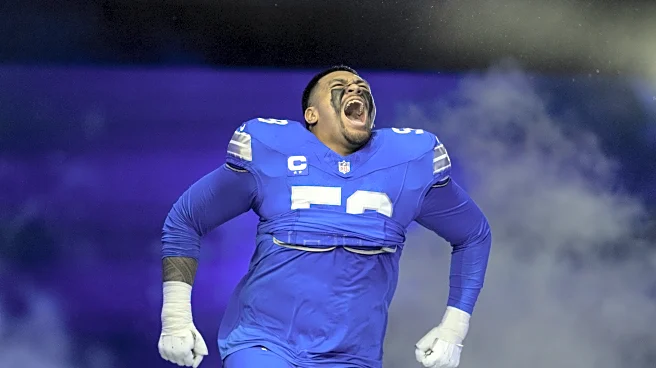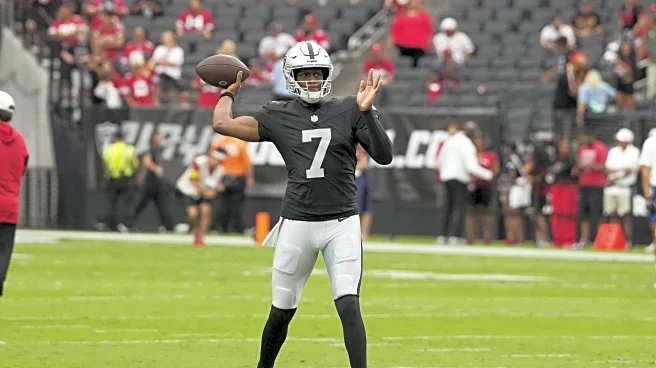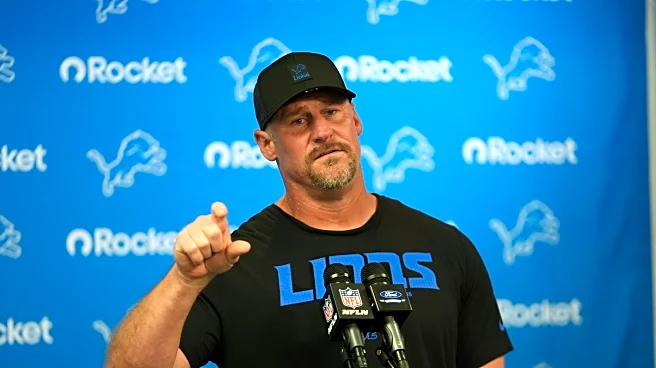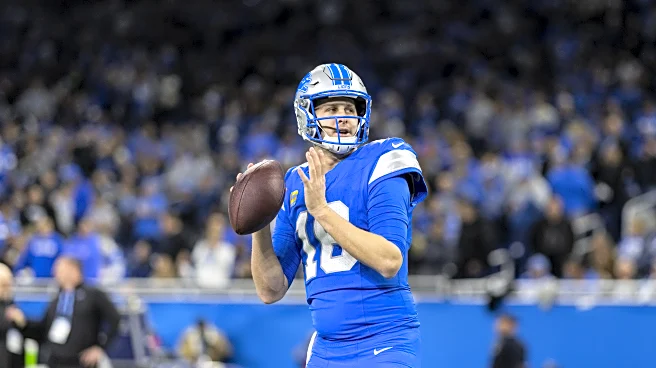What's Happening?
Penei Sewell, the offensive tackle for the Detroit Lions, has been ranked 13th in the NFL's Top 100 Players of 2025, as voted by his peers. This marks a significant improvement from his previous ranking of 22nd in 2024. Sewell's performance has been pivotal for the Lions, contributing to their 15-win season in 2024. He allowed only one sack in 1,144 snaps, earning an 87.5 overall grade and a 90.5 run blocking grade according to Pro Football Focus. Sewell's excellence in protecting quarterback Jared Goff has made him a contender for the inaugural Protector of the Year award. His role is expected to be even more crucial following the departure of two other offensive line starters from the Lions.
Why It's Important?
Sewell's ranking and performance underscore his importance to the Lions' offensive strategy and their aspirations for a Super Bowl victory. His ability to protect the quarterback and maintain a strong offensive line is critical, especially as the team faces changes in its lineup. Sewell's rise in the rankings also highlights his potential to become one of the top tackles in the NFL, joining the ranks of established players like Lane Johnson and Tristan Wirfs. This recognition not only boosts Sewell's career but also enhances the Lions' reputation and competitiveness in the league.
What's Next?
With Sewell's continued improvement and recognition, the Lions are likely to rely heavily on his skills in their pursuit of a Super Bowl title. The team will need to address the gaps left by departing players and ensure that Sewell's performance is supported by a strong overall offensive strategy. As Sewell continues to develop, he may soon be considered among the top ten players in the league, further solidifying his role as a key player for the Lions.
Beyond the Headlines
Sewell's rise in the rankings reflects broader trends in the NFL, where offensive linemen are increasingly recognized for their critical role in team success. This shift in focus may lead to more awards and recognition for players in these positions, changing how teams prioritize their recruitment and training strategies.













